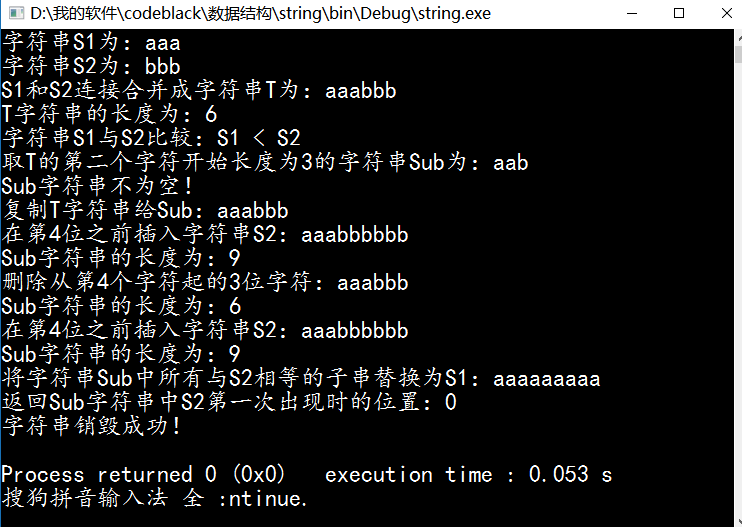串的定义:
字符串或串(String)是由数字、字母、下划线组成的一串字符。一般记为 s=“a1a2···an”(n>=0)。它是编程语言中表示文本的数据类型。在程序设计中,字符串(string)为符号或数值的一个连续序列,如符号串(一串字符)或二进制数字串(一串二进制数字)。
通常以串的整体作为操作对象,如:在串中查找某个子串、求取一个子串、在串的某个位置上插入一个子串以及删除一个子串等。两个字符串相等的充要条件是:长度相等,并且各个对应位置上的字符都相等。设p、q是两个串,求q在p中首次出现的位置的运算叫做模式匹配。串的两种最基本的存储方式是顺序存储方式和链接存储方式。
字符串的基本操作的实现:
对于字符串来说使用顺序存储方式比使用链式存储方式节约空间,且很容易实现,所有下面的代码实现的是字符串的顺序存方式。
注意:规定在串值后面加一个不计入串长度的结束标记字符,比如“\0”来表示串值终结。如果不加“\0”,输出时可能会出现乱码!
base.h
1 | //base.h |
String.h
1 | //string.h |
main.cpp
1 | //用来测试基本操作 |
字符串操作测试结果:


